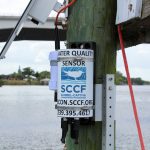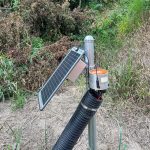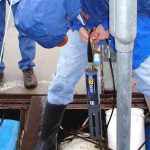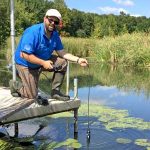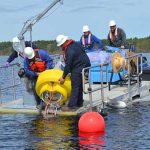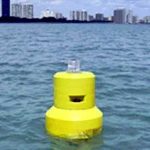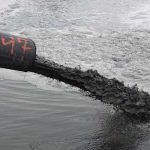Sediment Monitoring During the Klamath Dam Removal
Gravity Consulting
Leading up to the 21st century, the United States supported decades of dam construction in major waterways across the country. Many of these dams were hydroelectric facilities built in order to provide energy to nearby towns and cities. Unfortunately, these dams deteriorated the surrounding environment and harmed aquatic life. Many of these dams cut off […]
Read More →Safeguarding Southwest Florida with Marine Water Quality Monitoring
Sanibel-Captiva Conservation Foundation—RECON
When the Okeechobee and the Caloosahatchee River were connected by the United States Army Corps of Engineers (USACE) in the 1880s, the region underwent a variety of environmental changes. While water control locks were installed in the 1930s and 1960s, the Sanibel area in Southwest Florida still suffered from deteriorating water quality due to runoff […]
Read More →Nutrient Monitoring in Great Lakes Tributaries
Heidelberg University
Tributaries of the Great Lakes contribute to the largest freshwater source in the U.S., and with the trillions of gallons of water transported each year are a variety of nutrients carried by source waters. Sources like the Maumee River are inundated by nutrient loads in the form of runoff from agriculture and urban waste-water effluent, […]
Read More →Katharine Ordway Natural History Study Area
Macalester College
Inspired by a passion for the outdoors and the local terrain that Katharine Ordway had throughout her life, the Katharine Ordway Natural History Study Area (Ordway) at Minnesota's Macalester College is a study in diversity. To preserve the conservation legacy that serves as Ordway's foundation, its mission includes four pillars: education, research, sustainability, and civic […]
Read More →Using Technology to Protect Tradition
The Nottawaseppi Huron Band of Potawatomi (NHBP)
The Nottawaseppi Huron Band of Potawatomi (NHBP) is facing the future with a firm grasp on tradition and a mastery of new technology to handle rapid growth and changes. Recognized as a tribe by the US federal government in 1995, the NHBP employs thousands in western and central Michigan. Since its inception, restoring its land […]
Read More →Submerged Sensors of Sebago Lake
Portland Water District
Sebago Lake is the second largest lake in Maine—one of the only lakes in the nation with clean enough water for use by a drinking water facility without filtration requirements. Residents of the Greater Portland area are the beneficiaries, and they are invested in maintaining their lake's health. A joint project between the Portland Water […]
Read More →Cellular Data Buoys Predict E. Coli
Chicago Park District
The Chicago Park District is one of the largest municipal park managers in the nation with 8,100 acres of green space spread across 580 different parks. It also manages many indoor facilities, historical landmarks and beaches. At eight of its most popular beaches, the District has used cellular data buoys, for four years, in an […]
Read More →Total Suspended Solids From Dredging
Tetra Tech
The Avalon Back Bay Maintenance Dredging Project, aimed to clear out portions of New Jersey’s Princeton Harbor and other surrounding harbors to maintain proper depths for shipping and recreation. The dredging project seeks to remove 120,000 cubic yards of material, a great deal of which has already been placed on Graven’s Island. The Borough of […]
Read More →Emerald Isle Ferry Data
Central Michigan University
Though there are many data buoys floating around Lake Michigan, many of these are deployed in nearshore areas. There are still many offshore regions where scientists lack direct data from which to draw conclusions. One of these spaces is the stretch of water between Charlevoix, Michigan and Beaver Island, a popular destination for tourists. Luckily […]
Read More →Chesapeake Bay Best Management Practices
Maryland Department of Natural Resources
Because of the roles that shallow areas play in supporting the health of Chesapeake Bay, including serving as productive regions full of grass beds and nursery grounds for juvenile fish, managers with the Maryland Department of Natural Resources (DNR) are understandably interested in keeping tabs on how their conditions change over time. It’s possible to […]
Read More →

